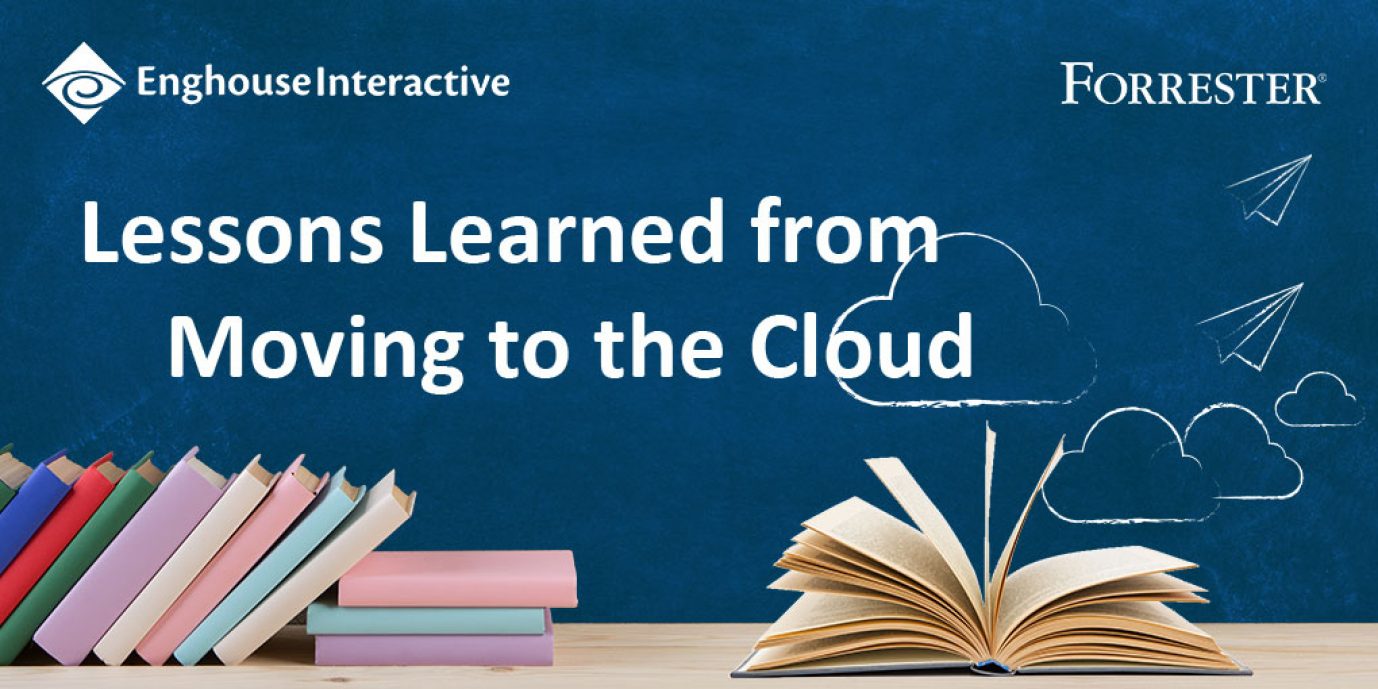Search
Contact Us
Webinar Recorded:Thursday, July 11th 2019
Replay
We hope that you enjoyed our Expert Webinar and benefited from the information John Cray (Enghouse Interactive) and Art Schoeller (Forrester Research) shared with you.
Key points made during the webinar:
John Cray– Vice President of Product Management at Enghouse Interactive, summarized some of his observations/recommendations:
- Customer Feedback Cloud solutions do NOT eliminate the need for APPLICATION management (handling moves, adds and changes to queues, agents, workflow, etc.) but do greatly simplify systems management.
- An Overarching Recommendation Make sure the business side – Agents and Supervisors – are engaged early so that their training/acceptance doesn’t hold up the project.
- Drivers and Trends The ability to add digital channels, such as chat/SMS, is significantly easier with a cloud solution.
Art Schoeller was adamant that Artificial Intelligence (AI) will not be a stand-alone capability over the mid-to-longer term. This leading-edge capability and the key informational and performance advantages it brings, will become an integral component of, not only cloud contact centers, but all communications capabilities and business processes.
The advantages AI delivers (data-based informational correlations, relevance and relative significance), along with the analysis of past interactions both specific to the individual and on an aggregated basis are powerful capabilities, which will quickly be used: however, wherever and whenever possible!
The Most Important Lessons Learned from Migrating to the Cloud
1 – What are the most significant business drivers for migrating to the Cloud?
Operational Flexibility and Agility: The cloud provides more overall flexibility and facilitates/simplifies application integration due to use of open standards.
Overall Security: Cloud providers have typically invested in the highest level of overall security and relevant certifications (PCI, HIPAA, etc.) and as a result they are significantly better protected than on premise based deployments.
2 – Feedback on success and / or setbacks from recent migrations?
Surprise! The Cloud option was proven to be less expensive than on premise deployment! The ongoing costs of cloud based applications, operational resources and support are decreasing, whereas on premise costs have stabilized and some are actually starting to increase. This negatively impacts the cost analysis for on premise solutions in favor of Cloud. Contact us to go through the analysis.
Resource Allocations: IT teams can be more effectively deployed to areas that contribute to building the business, their focus shifted to enhancing the customer experience and improving service levels versus running the contact center infrastructure.
Detailed Planning: To minimize the possibility of implementation related setbacks, the best practice is to ensure ALL applications – 3rd party provided and others – are properly included in the migration planning.
3 – Challenges that arise when moving to Cloud?
Eliminate Roadblocks: The use of open standards is required to facilitate integrations and ensure operational agility. Open API’s and standards based applications simplify future enhancements/evolution and related ongoing support activities as well.
4 – Recommendations on how best to move to the Cloud?
Engage IT early in the project: Make sure that IT understands that the objective is not to eliminate them – but to focus them to projects that deliver higher levels of value to your end customers.
Ensure a Comprehensive Approach: Once implemented, ensure that all new functional capabilities and how operational measurements are calculated and reported, are well understood so as to eliminate any misconceptions or inaccurate use.
5 – Most important marketplace trends to keep in mind?
High Performance Anytime: AI delivers high-performance capabilities consistently – when properly implemented it will reduce mundane tasks so that agents can be better utilized in areas where personalized support is needed. Over time, this evolution will drive the need for more highly skilled agents in order to provide expected service levels.
Cloud migration will deliver significantly more value than expected……
Based on their extensive experience both John and Art stated that in most if not all their conversations, customers identified that more benefits – both hard and soft – come from migration to the cloud. Benefits quickly build to meet expectations …. and then generally bypass the initial estimates by a healthy margin.
This reality applies to companies both large and small – the difference is where the benefits come from. Larger organizations are better able to distribute their resources to where they are needed thereby benefiting from more operational agility. More costly specialized resources can be focused on projects where their knowledge and expertise are the most beneficial. Smaller organizations are able to complement/supplement their existing resources more efficiently and to better focus their organizations on delivering end-user value.
Assets you can download:
- webinar recording and presentation
- Enghouse brochures for Cloud and AI Insights.
Enghouse Interactive thanks you for your participation and your questions.
Please keep watch on our various communications channels – email, Twitter and LinkedIn – so that you’ll be “in the know” when we announce our next webinar.
Think Enghouse Interactive when you want to Elevate your Contact Center to the Cloud and Enghouse AI Insightsto improve your Customer Experience management!
Published In
AI Enghouse Interactive Educates digital transformation Contact Center Enterprise Contact Center Service Provider Outbound Dialer Communications Center customer support social media webchat CCaaS multi-tenant quality management Avaya compliance Integration & Optimization Service Provider Cloud-Based Contact Center attendant console Contact Center Solutions Microsoft Enghouse Interactive API Customer Experience Management PCI DSS IVR/Self-Service News workforce management zz-General events voice of the customer customer service speech analytics contact center optimization quality monitoring Contact Center Customer Experience Omni-Channel
Join Us for an Energetic Panel Discussion with Forrester Research
Continue Reading

Elevate Your Contact Center from a Cost Center into a Revenue Generator!
Organizations with Contact Centers are in an enviable position – each and every day, they gather customer data that is constantly refreshed and upgraded. When you think about it, they are getting a steady stream of new information from an unbiased focus group.
Continue Reading
Thank you!
You have successfully subscribed to our newsletter.
Sign up here to watch your selected video as well as gain access to the other videos listed here
Sign up here to watch your selected video
Sign up here to watch the videos as well access to more Tips 'N' Tricks videos
Get your free download